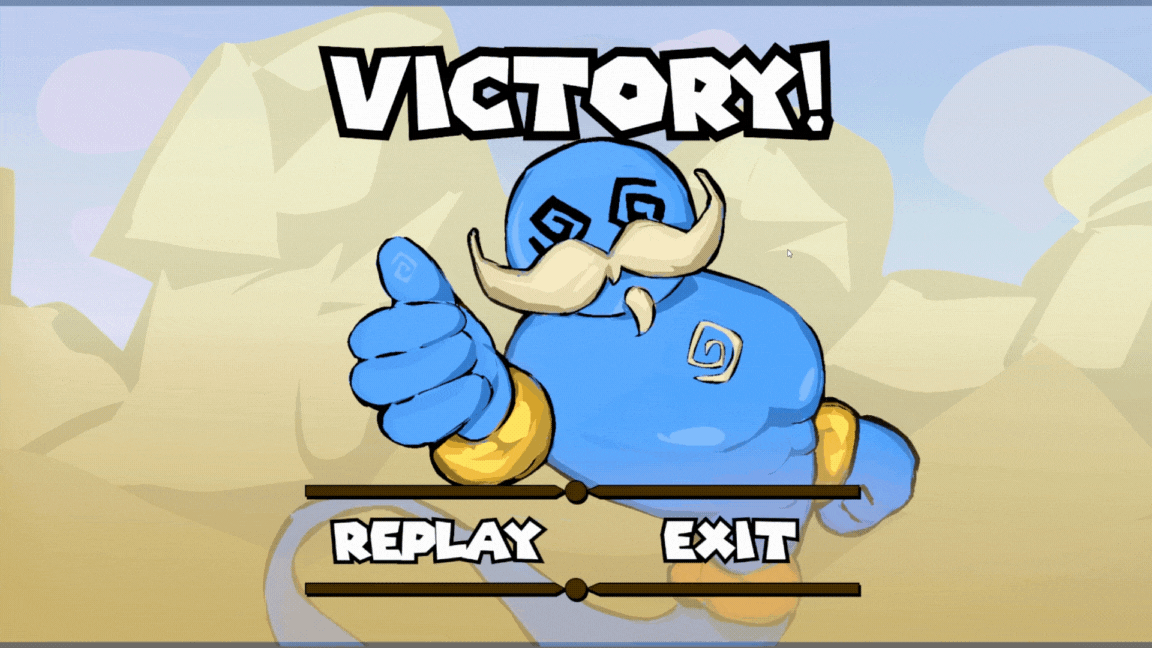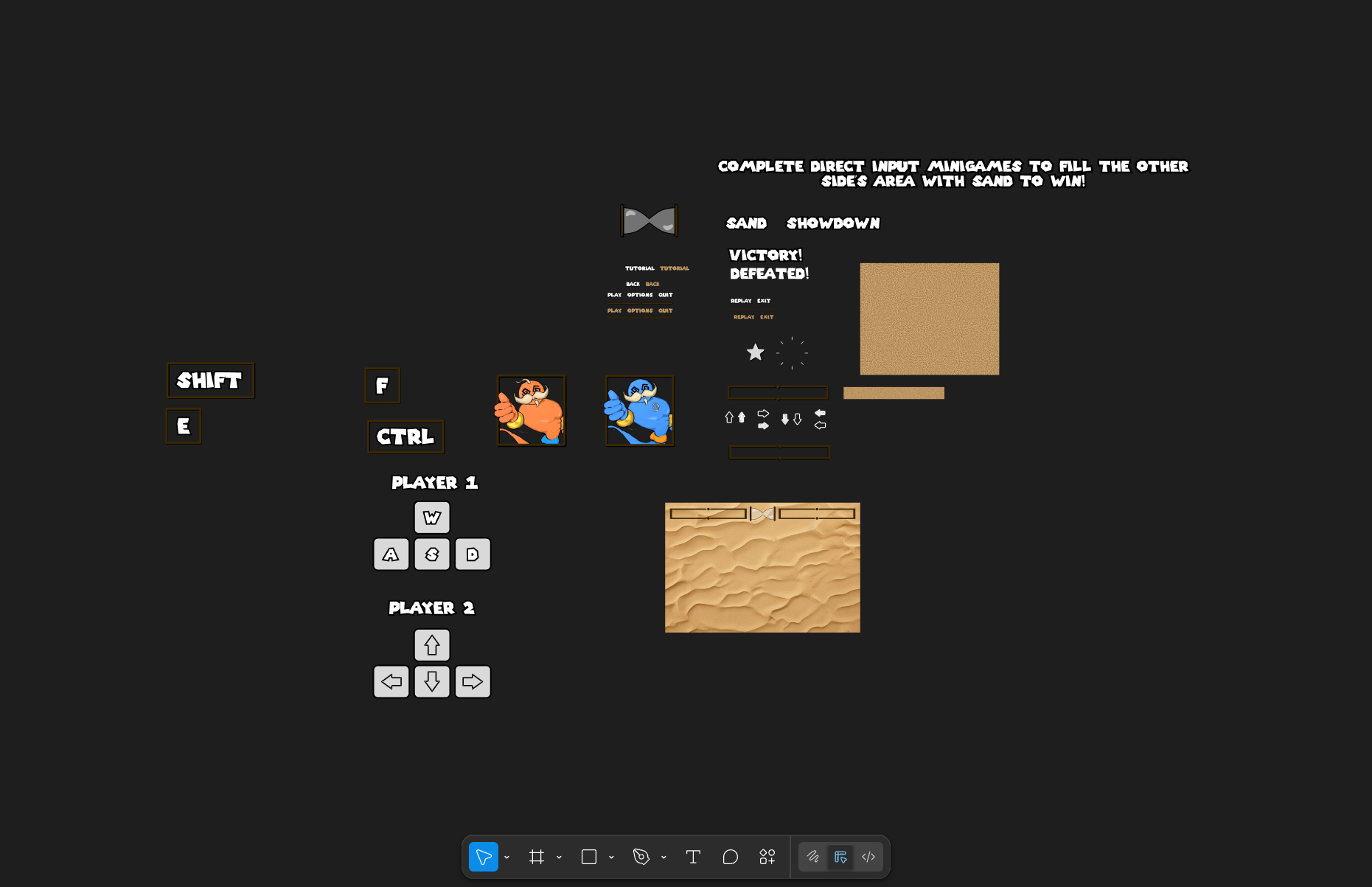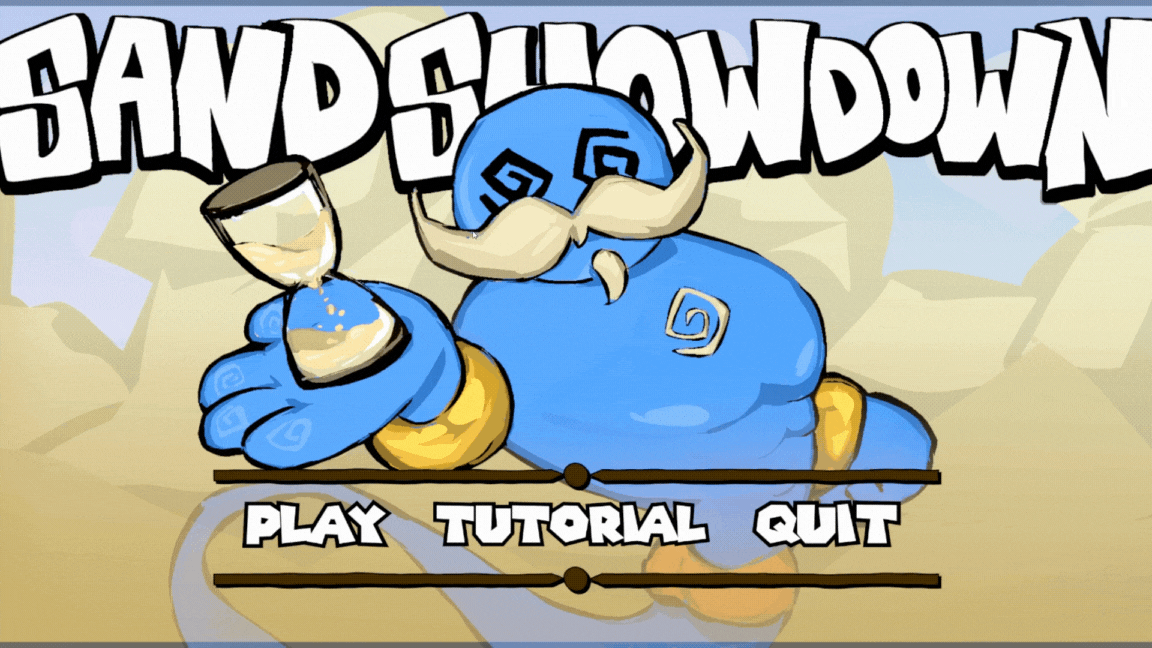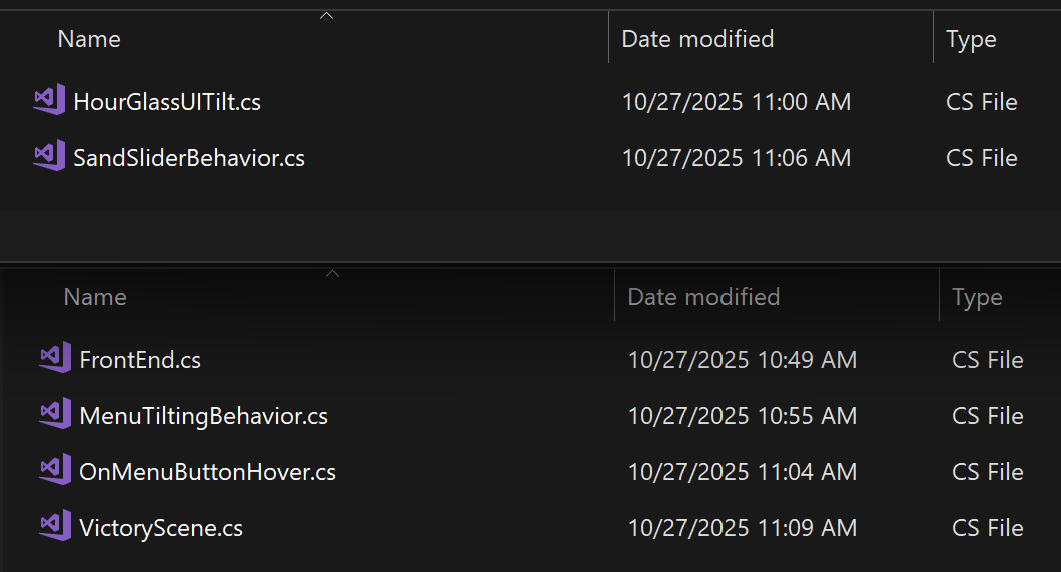The most immediately notable UI is the collection of assets towards the bottom of the screen. It stays out of the way of the playing field, and it communicates the most vital information. Because of how fast each match moves, players and team members weren’t fully focused on how much sand their side was filled with. All of their focus was on hitting pillars and engaging with the input mini-game. Each player has a bar that representing their colors and the amount of sand their side is filled with. Between the bars is a hourglass that quickly communicates which direction the arena is tilting. It all comes back to communication, having an easy to read piece of UI that allows the player understand what’s going on at a glance.
Beyond the bars and hourglass, key prompts for when a player can interact with an object, along with the corresponding key helped reduce confusion. There was a desire to have the prompts appear close to the interactable object, but I did not get around to that, unfortunately.
The input mini-game needed to be communicated clearly, so thick, bold arrows were the way to go.





